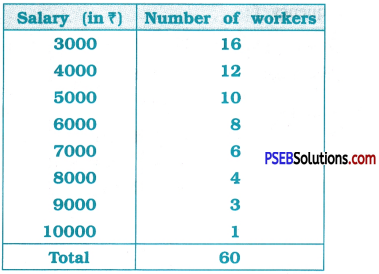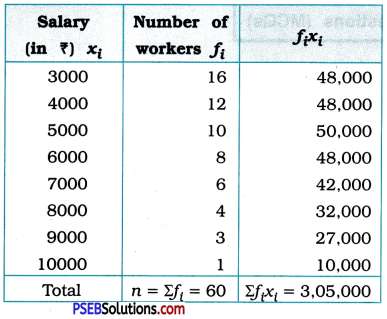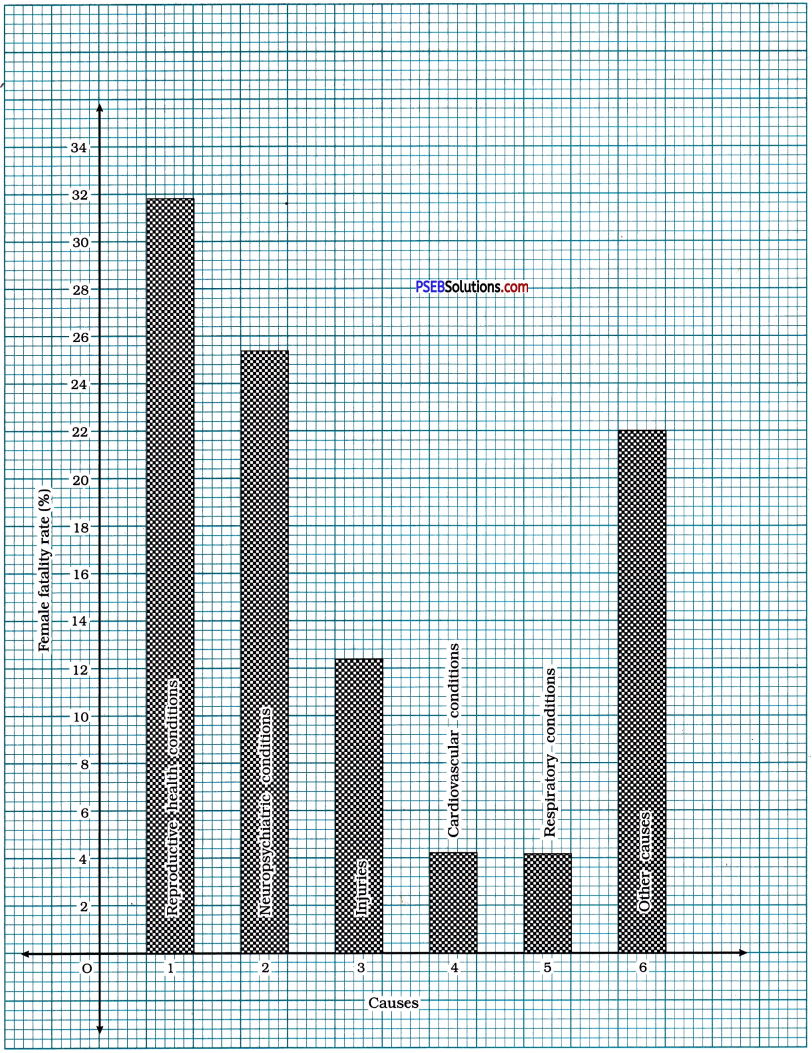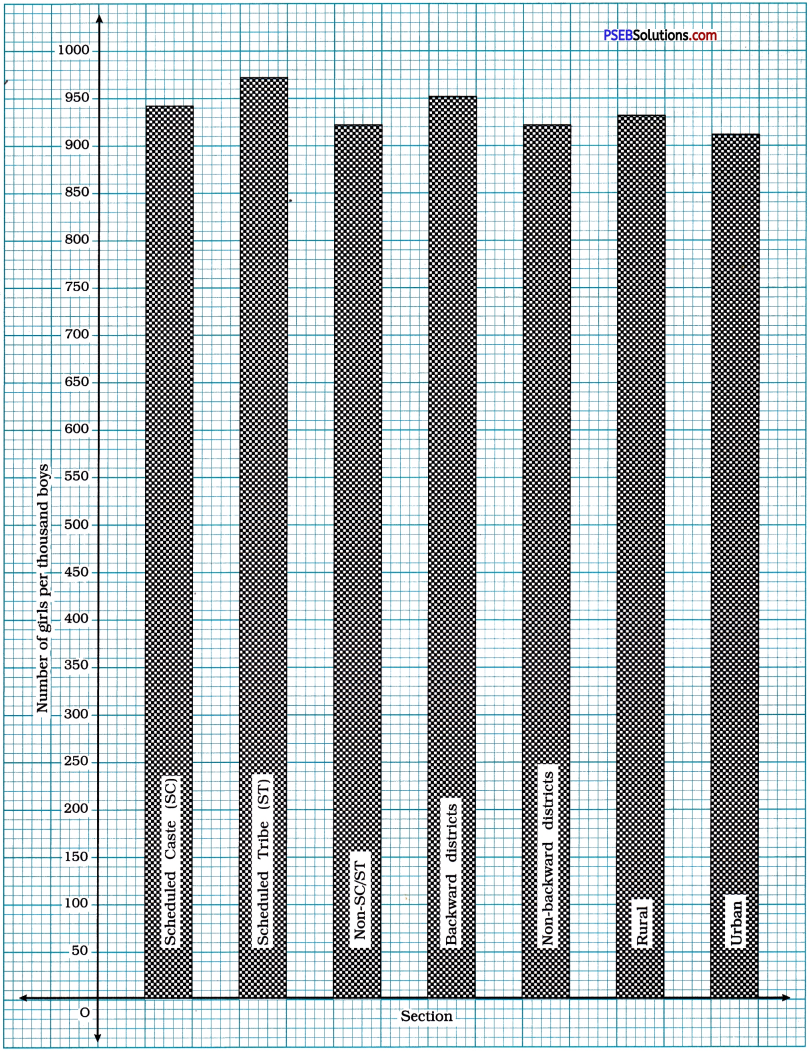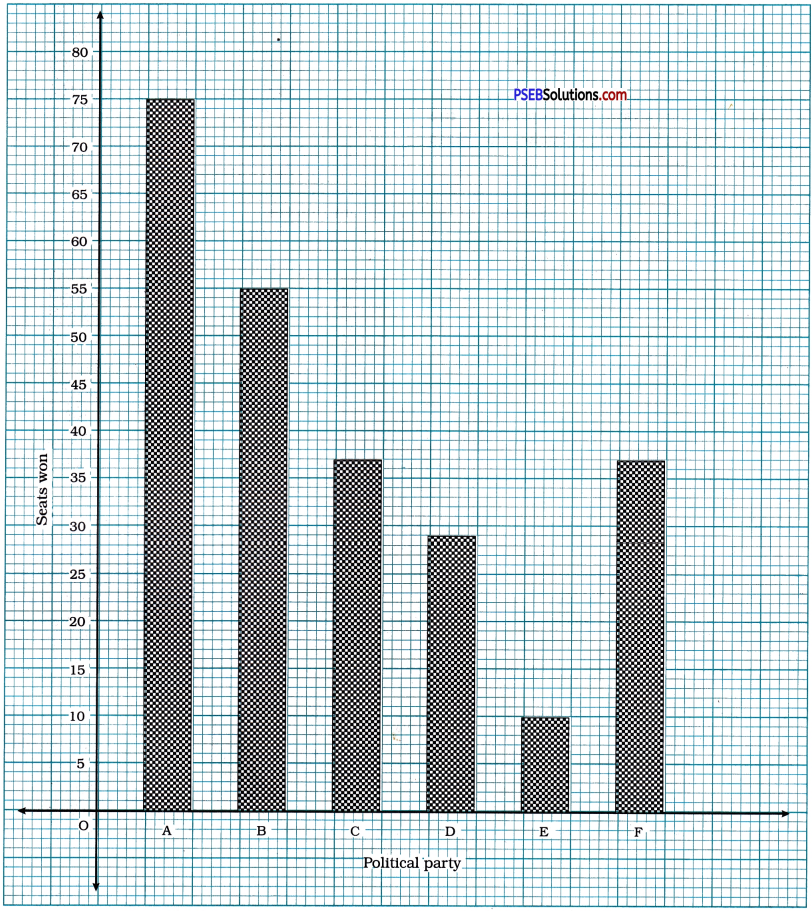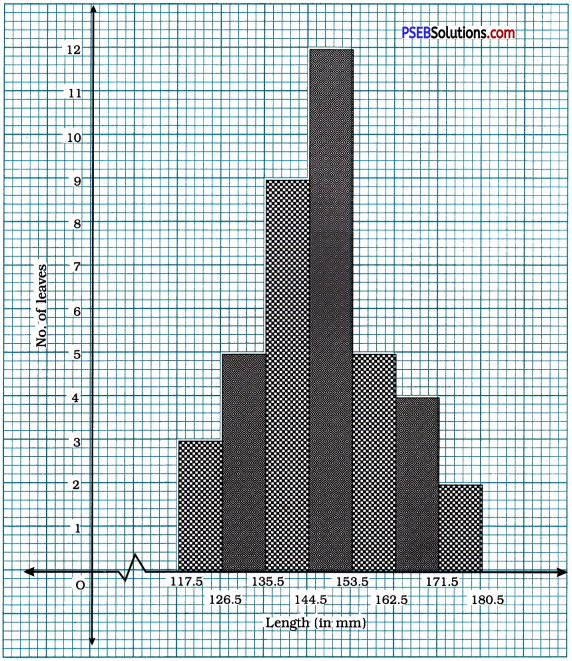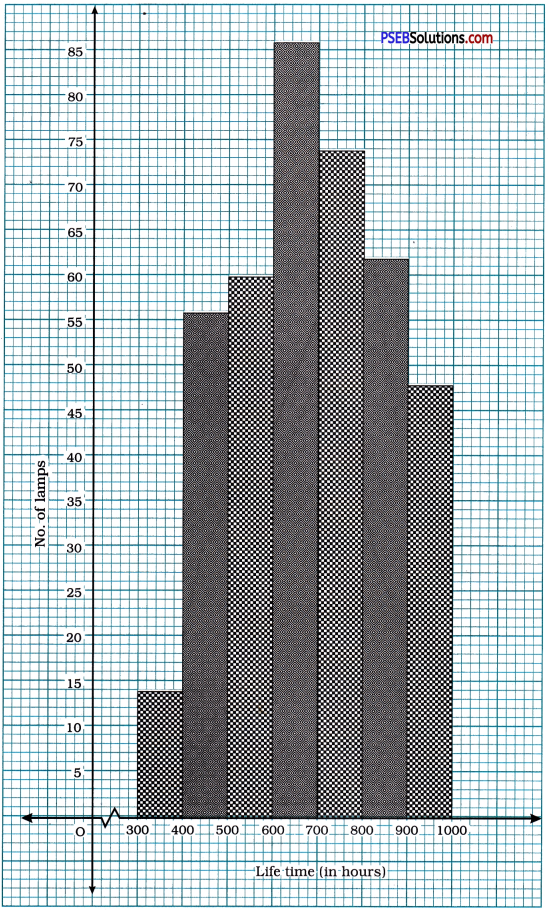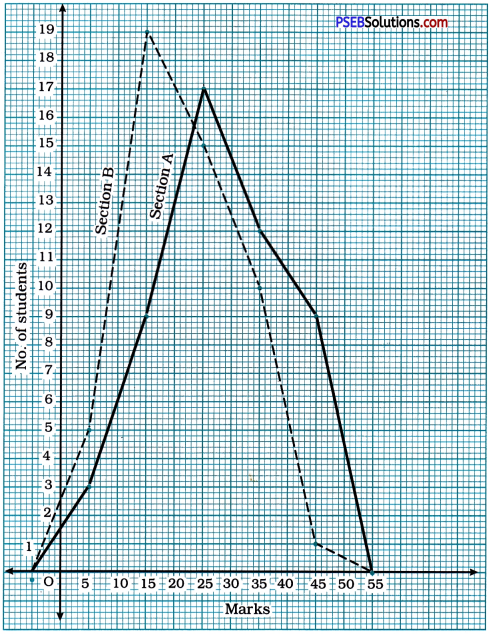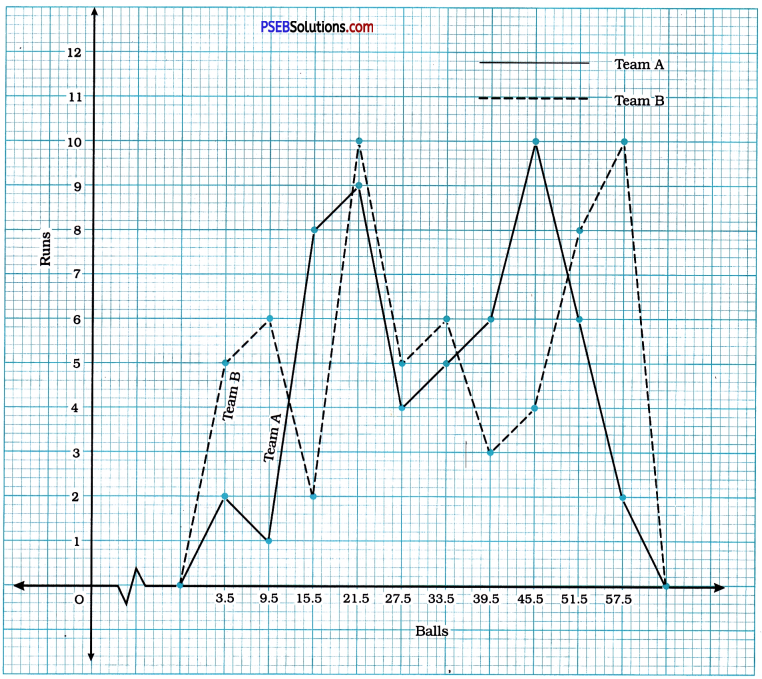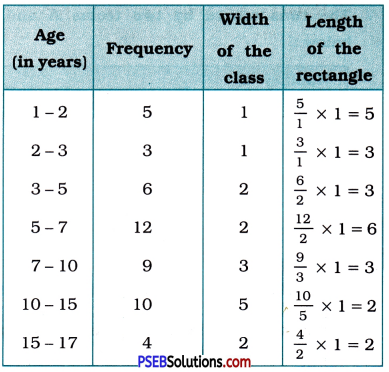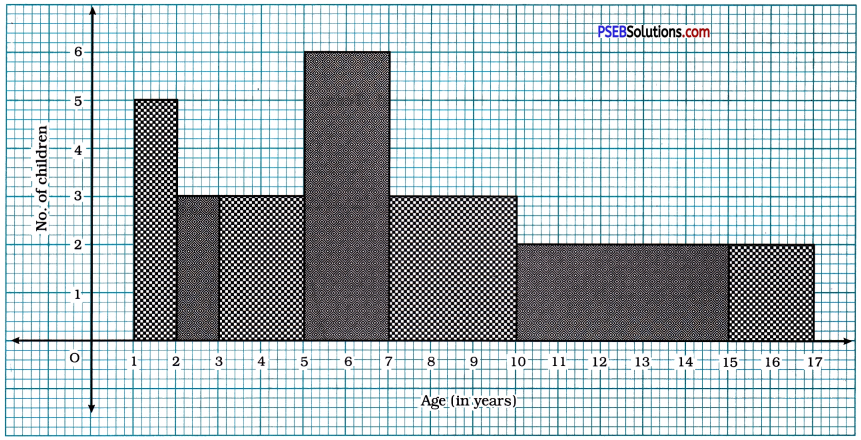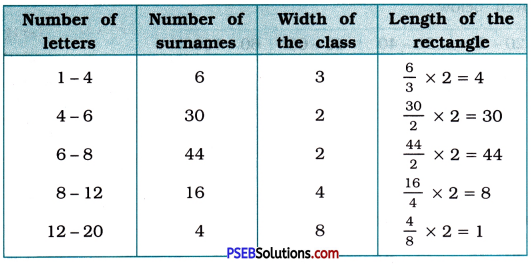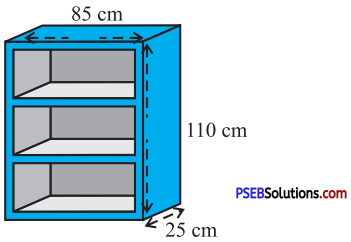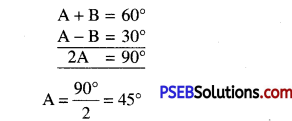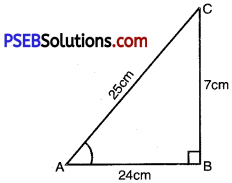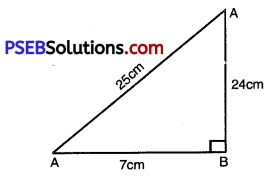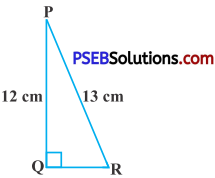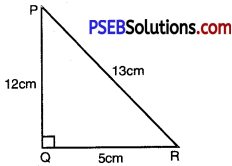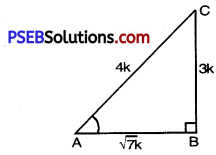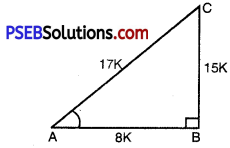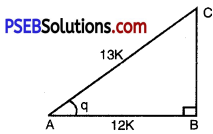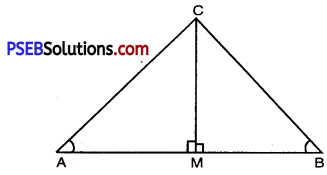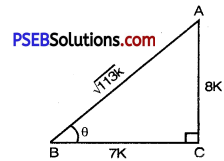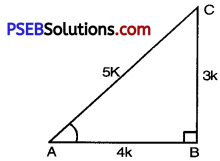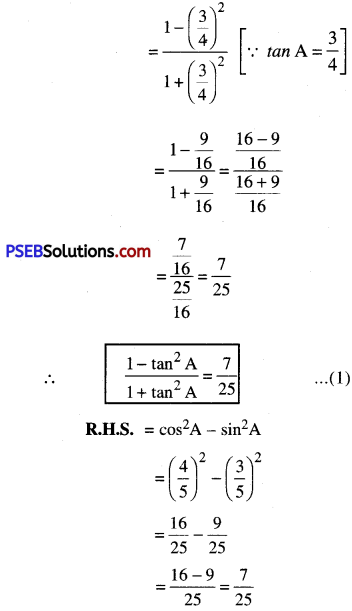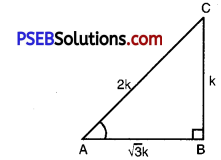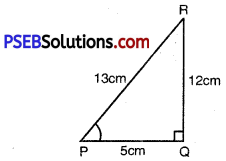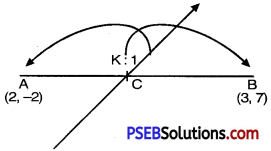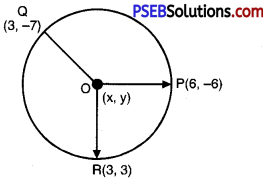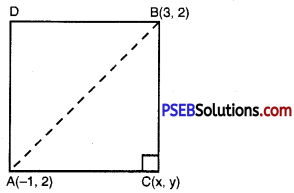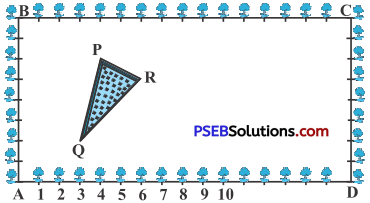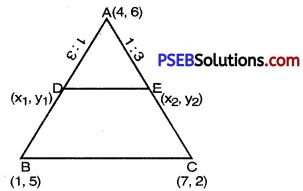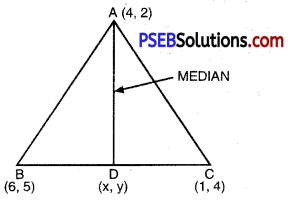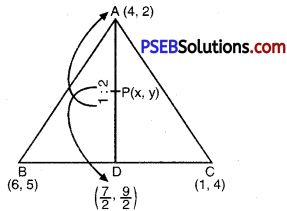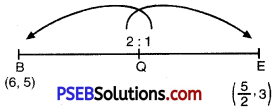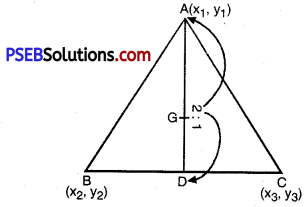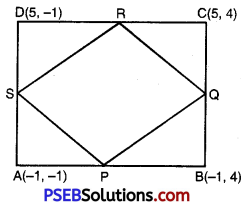Punjab State Board PSEB 9th Class Maths Book Solutions Chapter 15 Probability Ex 15.1 Textbook Exercise Questions and Answers.
PSEB Solutions for Class 9 Maths Chapter 15 Probability Ex 15.1
Question 1.
In a cricket match, a batswoman hits a boundary 6 times out of 30 balls she plays. Find the probability that she did not hit a boundary.
Answer:
The batswoman played 30 balls. Hence, the total number of trials = 30. If the event that she did not hit a boundary is denoted by A, then. the number of trials when event A occured is 30 – 6 = 24.
∴ p(A) = \(\frac{\text { No. of trials in which event A occured }}{\text { The total number of trials }}\)
= \(\frac{24}{30}\)
= \(\frac{4}{5}\)
Thus, the probability that she did not hit a boundary is \(\frac{4}{5}\).
![]()
Question 2.
1500 families with 2 children were selected randomly, and the following data were s recorded:

Compute the probability of a family, chosen at random, having
(i) 2 girls
(ii) 1 girl
(iii) No girl. Also check whether the sum of these probabilities is 1.
Answer:
Here, the total number of families is 1500.
Hence, the total number of trials = 1500
(i) Let event A denote the event that the family chosen at random is having 2 girls.
Then, the number of trials when event A occured is 475.
∴ P(A) = \(\frac{\text { No. of trials in which event A occured }}{\text { The total number of trials }}\)
= \(\frac{475}{1500}\)
= \(\frac{19}{60}\)
(ii) Let event B denote the event that the family chosen at random is having 1 girl.
Then, the number of trials when event B occured is 814.
∴ P(B) = \(\frac{\text { No. of trials in which event B occured }}{\text { The total number of trials }}\)
= \(\frac{814}{1500}\)
= \(\frac{407}{750}\)
(iii) Let event C denote the event that the family chosen at random Is having no girl.
Then, the number of trials when event C occured is 211.
∴ p(C) = \(\frac{\text { No. of trials in which event } \mathrm{C} \text { occured }}{\text { The total number of trials }}\)
= \(\frac{211}{1500}\)
Now,
P(A) + P(B) + P(C) = \(\frac{19}{60}+\frac{407}{750}+\frac{211}{1500}\)
= \(\frac{475+814+211}{1500}\)
= \(\frac{1500}{1500}\)
= 1
![]()
Question 3.
Refer to sum no. 5 of “Sums to Enrich ‘Remember’” in chapter 14. Find the probability that a student of the class was born in August.
Answer:
From the Bar graph in the sum which is referred here, we get the following information:
Total number of students = 40 and the number of students born in August = 6.
Hence, if event A denotes the event that a student of the class is born in August, then the number of trials when event A occured is 6 and the total number of trials is 40.
∴ P(A) = \(\frac{\text { No. of trials in which event A occured }}{\text { The total number of trials }}\)
= \(\frac{6}{40}\)
= \(\frac{3}{20}\)
Question 4.
Three coins are tossed simultaneously 200 times with the following frequencies of different outcomes:

If the three coins are simultaneously tossed again, compute the probability of 2 heads coming up.
Answer:
Here, the total number of trials = 200. If event A denotes the event that 2 heads come up, then the number of trials when event A occured is 72.
∴ P(A) = \(\frac{\text { No. of trials in which event A occured }}{\text { The total number of trials }}\)
= \(\frac{72}{200}\)
= \(\frac{9}{25}\)
![]()
Question 5.
An organisation selected 2400 families at random and surveyed them to determine a relationship between income level and the number of vehicles in a family. The information gathered is listed in the table below :
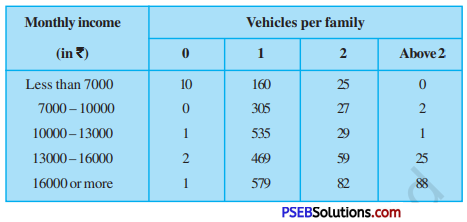
Suppose a family is chosen. Find the probability that the family chosen is ( i ) earning ? 10000- ? 13000 per month and owning exactly 2 vehicles.
(ii) earning ₹ 16000 or more per month and owning exactly 1 vehicle.
(iii) earning less than ₹ 7000 per month and does not .own any vehicle.
(iv) earning ₹ 13000 – ₹ 16000 per month and owning more than 2 vehicles.
(v) owning not more than 1 vehicle.
Answer:
Here, the total number of families is 2400. Hence, the total number of trials = 2400
(i) Let event A denote the event that the family is earning ₹ 10000 – ₹ 13000 per month and owning exactly 2 vehicles.
Then, the number of trials when event A occured = 29.
∴ P(A) = \(\frac{\text { No. of trials in which event A occured }}{\text { The total number of trials }}\)
= \(\frac{29}{2400}\)
![]()
(ii) Let event B denote the event that the family is earning ₹ 16000 or more per month and owning exactly 1 vehicle.
Then, the number of trials when even B occured = 579.
∴ P(B) = \(\frac{\text { No. of trials in which event B occured }}{\text { The total number of trials }}\)
= \(\frac{579}{2400}\)
= = \(\frac{193}{800}\)
(iii) Let event C denote the event that the family is earning less than ₹ 7000 per month and does not own any vehicle.
Then, the number of trials when event C occured = 10.
∴ P(C) = \(\frac{\text { No. of trials in which event C occured }}{\text { The total number of trials }}\)
= \(\frac{10}{2400}\)
= = \(\frac{1}{240}\)
(iv) Let event D denote the event that the family is earning ? 13000 -? 16000 per month and is owning more than 2 vehicles. Then, the number of trials when event D occured = 25.
∴ P(D) = \(\frac{\text { No. of trials in which event D occured }}{\text { The total number of trials }}\)
= \(\frac{25}{2400}\)
= \(\frac{1}{96}\)
(v) Let event E denote the event that the family is owning not more than 1 vehicle, i.e., 1 vehicle or no vehicle.
Then, the number of trials when event E occured.
= 10 + 160 + 0 + 305 + 1 + 535 + 2 + 469 + 1 + 579 = 2062
∴ P(E) = \(\frac{\text { No. of trials in which event E occured }}{\text { The total number of trials }}\)
= \(\frac{2062}{2400}\)
= \(\frac{1031}{1200}\)
![]()
Question 6.
Refer to table 7 of sum no. 7 in “Sums to Enrich ‘Remember’” in chapter 14.
(i) Find the probability that a student obtained less than 20 marks in the mathematics test.
(ii) Find the probability that a student obtained marks 60 or above.
Answer:
According to the table referred here, the total number of students = 90.
Hence, the total number of trials = 90.
(i) According to the same table, the number of students who obtained less than 20 marks in the mathematics test is 7. So, if the event that a student obtained less than 20 marks in mathematics test is called event A, then the number of trials when event A occured is 7.
∴ P(A) = \(\frac{\text { No. of trials in which event A occured }}{\text { The total number of trials }}\)
= \(\frac{7}{90}\)
(ii) Let event B denote the event that a student obtained 60 or more marks. Then, , according to the same table, the number of trials when event B occured = 15 + 8 = 23.
∴ P(B) = \(\frac{\text { No. of trials in which event B occured }}{\text { The total number of trials }}\)
= \(\frac{23}{90}\)
Question 7.
To know the opinion of the students about the subject statistics, a survey of 200 students was conducted. The data is recorded in the following table:
| Opinion | Number of students |
| Like | 135 |
| Dislike | 65 |
Find the probability that a student chosen at random
(i) Likes statistics,
(ii) Does not like it.
Answer:
Here, the total number of students = 200.
Hence, the total number of trials = 200.
![]()
(i) Let event A denote the event that a student likes statistics.
Then, the number of trials when event A occured = 135
∴ P(A) = \(\frac{\text { No. of trials in which event A occured }}{\text { The total number of trials }}\)
= \(\frac{135}{200}\)
= \(\frac{27}{40}\)
(ii) Let event B denote the event that a student does not like statistics. Then, the number of trials when event B occured = 65.
∴ P(B) = \(\frac{\text { No. of trials in which event B occured }}{\text { The total number of trials }}\)
= \(\frac{65}{200}\)
= \(\frac{13}{40}\)
Question 8.
Refer to sum no. 2, Exercise 14.2. What is the empirical probability that an engineer lives:
(i) less than 7 km from her place of work ?
(ii) more than or equal to 7km from her place of work ?
(iii) within \(\frac{1}{2}\)km from her place to work?
Answer:
The total number of observations in the question referred here is 40.
Hence, the total number of trials = 40.
(i) Let event A denote the event that the distance between her residence and the place of work is less than 7 km. Then there are 9 such observations, viz., 5, 3, 2, 3, 6, 5, 6, 2, 3.
Hence, the number of trials when event A occured = 9.
∴ P(A) = \(\frac{\text { No. of trials in which event A occured }}{\text { The total number of trials }}\)
= \(\frac{9}{40}\)
![]()
(ii) Let event B denote the event that the said distance is 7 km or more than 7 km. Then, all the remaining 31(40-9) observations refer to event B.
Hence, the number of trials when event B occured = 31
∴ P(A) = \(\frac{\text { No. of trials in which event A occured }}{\text { The total number of trials }}\)
= \(\frac{31}{40}\)
(iii) Let event C denote the event that the engineer lives within \(\frac{1}{2}\) km from her place of work. There is no observation which is \(\frac{1}{2}\) or less than \(\frac{1}{2}\).
Hence, the number of trials when event C occured = 0.
∴ P(C) = \(\frac{\text { No. of trials in which event C occured }}{\text { The total number of trials }}\)
= \(\frac{0}{40}\)
= 0
Question 9.
Activity: Note the frequency of two-wheelers, three-wheelers and four-wheelers going past during a time interval, in front of your school gate. Find the probability that any one vehicle out of the total vehicles you have observed is a two-wheeler.
Answer:
Note: Students should do this Activity themselves.
Question 10.
Activity: Ask all the students in your class to write a 3-digit number. Choose any student from the room at random. What is the probability that the number written by her / him is divisible by 3 ? Remember that a number is divisible by 3, if the sum of its digits is divisible by 3.
Answer:
Note: Students should do this Activity themselves.
Question 11.
Eleven bags of wheat flour, each marked 5 kg, actually contained the following weights of flour (in kg) :
4.97 5.05 5.08 5.03 5.00 5.06 5.08 4.98 5.04 5.07 5.00
Find the probability that any of these bags chosen at random contains more than 5 kg of flour.
Answer:
The total number of bags = 11.
Hence, the total number of trials = 11.
Let event A denote the event that a bag contains more than 5 kg of flour.
There are 7 bags weighing more than 5 kg.
Their weights (in kg) are 5.05, 5.08, 5.03, 5.06, 5.08, 5.04 and 5.07. Hence, the number of trials when event A occured = 7.
∴ P(A) = \(\frac{\text { No. of trials in which event A occured }}{\text { The total number of trials }}\)
= \(\frac{7}{11}\)
![]()
Question 12.
In sum no. 5, Exercise 14.2, you were asked to prepare a frequency distribution table, regarding the concentration of sulphur dioxide in the air in parts per million of a certain city for 30 days. Using this table, find the probability of the concentration of sulphur dioxide in the interval 0.12 – 0.16 on any of these days.
Answer:
In sum no. 5, Exercise 14.2, total number of days is 30.
Hence, the total number of trials = 30.
In the table prepared there, we see that the frequency of class 0.12 – 0.16 is 2.
Hence, during 2 days the concentration of sulphur dioxide (in ppm) was in the interval 0.12 – 0.16.
Let event A denote the event that the concentration of sulphur dioxide (in ppm) is in the interval 0.12 – 0.16.
Hence, the number of trials when event A occured = 2.
∴ P(A) = \(\frac{\text { No. of trials in which event A occured }}{\text { The total number of trials }}\)
= \(\frac{2}{30}\)
= \(\frac{1}{15}\)
Question 13.
In sum no. 1, Exercise 14.2, you were asked) to prepare a frequency distribution table regarding the blood groups of 30 students of a class. Use this table to determine the probability that a student of this class, selected at random, has blood group AB.
Answer:
In sum no. 1, Exercise 14.2, the total number of students is 30.
Hence, the total number of trials = 30.
Let event A denote the event that a student has blood group AB. The number of students having blood group AB is 3.
Hence, the number of trials when event A occured = 3.
∴ P(A) = \(\frac{\text { No. of trials in which event A occured }}{\text { The total number of trials }}\)
= \(\frac{3}{30}\)
= \(\frac{1}{10}\)


